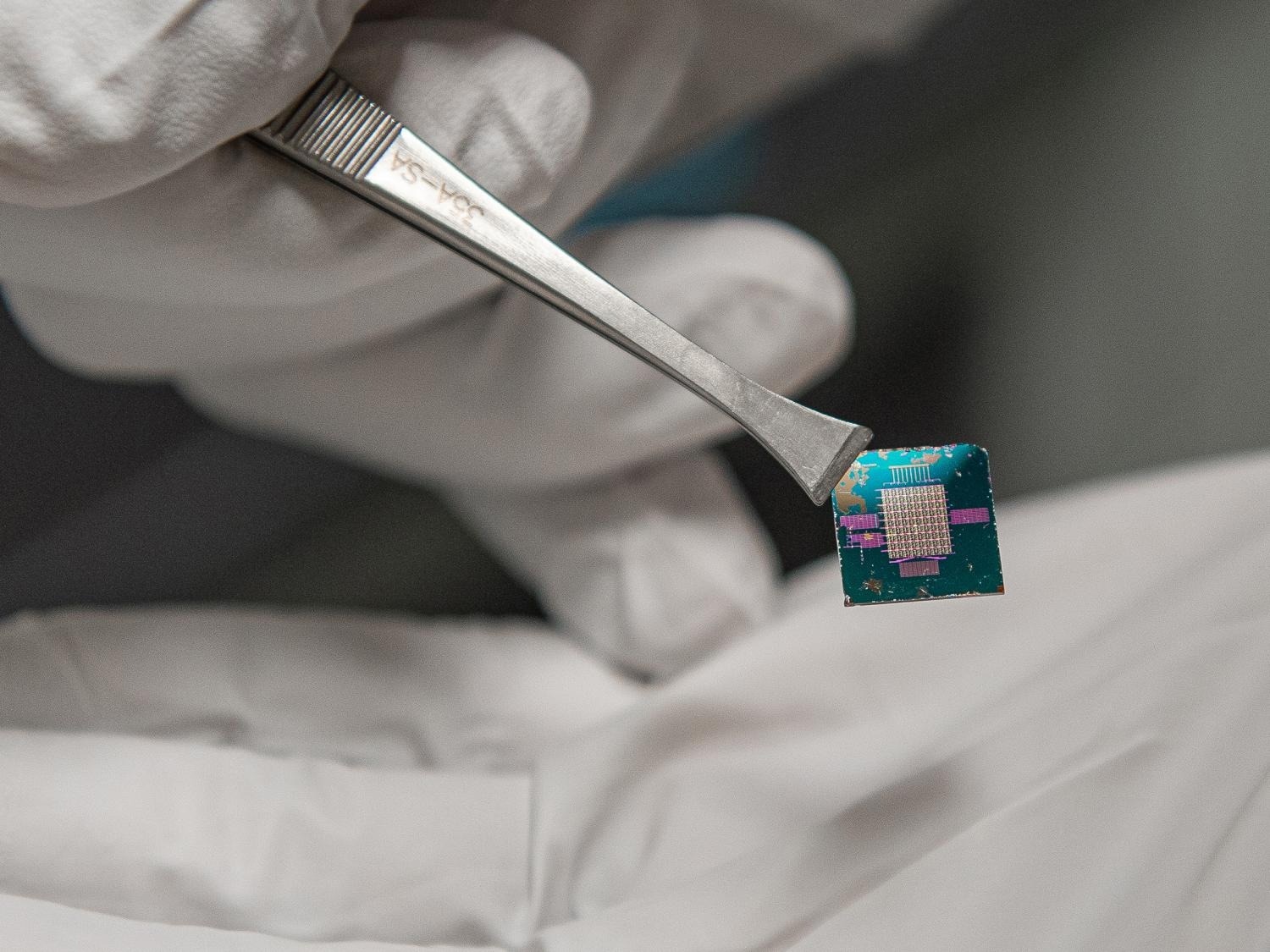In the age of smart technology, when data is continually created by and transmitted among mobile phones, smart watches, cameras, smart speakers, and other gadgets, digital information is everywhere.
 Penn State materials science and engineering researchers used molybdenum disulfide, a 2D material, to create a low-power cryptographic chip less than one nanometer thick. Image Credit: Kelby Hochreither/Penn State
Penn State materials science and engineering researchers used molybdenum disulfide, a 2D material, to create a low-power cryptographic chip less than one nanometer thick. Image Credit: Kelby Hochreither/Penn State
According to a multidisciplinary team of Penn State researchers, protecting digital data on portable devices from hackers demands enormous amounts of energy. They also warn that protecting these devices from bad actors is becoming a growing concern.
Researchers created a smart hardware platform, or chip, under the direction of Saptarshi Das, an associate professor of engineering science and mechanics at Penn State, to reduce energy usage while enhancing security. On June 23rd, 2022, the researchers published the findings in Nature Communications.
Information from our devices is currently stored in one location, the cloud, which is shared and stored in large servers. The security strategies employed to store this information are extremely energy inefficient and are vulnerable to data breaches and hacking.
Saptarshi Das, Associate Professor, Engineering Science and Mechanics, The Pennsylvania State University
At present, data is transformed into a code using cloud encryption to prevent unwanted access. For instance, the popular messaging app WhatsApp employs the technique, ostensibly guaranteeing that only the devices engaged in the discussion can view private messages.
Researchers have shown that, in reality, cloud encryptions are prone to data breaches and are frequently targeted by attackers.
Although software-based security modules are powerful, there exists a multitude of challenges with them. We developed a cryptographic platform using a two-dimensional material to overcome these security limitations.
Akhil Dodda, Study First Author and Doctoral Student, The Pennsylvania State University
Researchers stated silicon, which is frequently used to produce transistors used in cellphones, would not work to create a transistor small enough to save on energy usage. To make a low-power cryptography device, they instead used 2D materials, namely molybdenum disulfide (MoS2), which is only a few nanometers thick.
The MoS2 required to make the device was synthesized by Penn State coworkers Nicholas Trainor, a doctorate student in materials science and engineering, and Joan Redwing, a distinguished professor of electrical engineering and materials science and engineering.
To encrypt the data, the device uses 320 MoS2 transistors, each of which has a sensor unit, a storage unit, and a processing unit. Researchers employed machine learning techniques to analyze output patterns and forecast input data to verify the security of the encryption process.
Das stated, “We found that the advanced machine learning techniques couldn’t decode the encrypted information, reinforcing the resilience of the encryption process against machine learning attacks. Without prior knowledge of the information channels and decoding variables, it is extremely difficult to decode the information.”
According to the researchers, the energy used to encrypt the data was also substantially less than silicon-based security techniques.
The outcome was a low-power, all-in-one microprocessor that could sense, store, compute, and transfer information across linked devices — possibly providing a solution for consumers who desire more security but cannot afford to constantly drain the batteries of their mobile gadgets.
“In the near future, we plan to reach out to federal agencies and private corporations who specialize in smart security to extend and expand the scope of our work,” Das added.
This research was funded by the National Science Foundation and the Army Research Office.
Journal Reference:
Dodda, A., et al. (2022) All-in-one, bio-inspired, and low-power crypto engines for near-sensor security based on two-dimensional memtransistors. Nature Communications. doi:10.1038/s41467-022-31148-z.